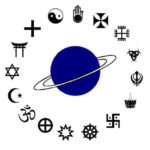Science True or False General Quiz Questions – Learn Science Facts

Science Quiz: True or False Quiz Question and Answers
Do you get fired up about physics? Giddy about geology? Sort out science fact from fiction with these questions.
1. The moving sidewalk was invented in 1893.
True or False?
Answer: True
The first moving sidewalk, now common in airports and other large spaces, appeared at the Chicago World’s Columbian Exhibition in 1893.
2. A hologram shows two dimensions.
True or False?
Answer: False
A hologram is like a three-dimensional photograph. Photographs show only two dimensions: height and width. Holograms show three dimensions: height, width, and depth.
3. Complex animal life began about 550 million years ago.
True or False?
Answer: True
Fossil beds in China, Namibia, and elsewhere provide evidence of complex animal life dating to 550 million years ago. In the Cambrian Period, soon after, many kinds of animals and plants appeared.
4. Mycodiesel is a fuel made of grass.
True or False?
Answer: False
Mycodiesel is a fuel, much like diesel, that has been developed experimentally from a kind of fungus.
5. A carbon atom is lighter than a hydrogen atom.
True or False?
Answer: False
A carbon atom is about twelve times heavier than a hydrogen atom. Hydrogen is a gas, and carbon is a solid.
6. The World Wide Web was invented in 1960.
True or False?
Answer: False
Tim Berners-Lee, a British scientist, invented the World Wide Web protocol in 1989. The Internet, on which it was based, was laid out in the 1960s.
7. Holograms were invented in Hungary.
True or False?
Answer: False
Dennis Gabor, a Hungarian-born scientist, invented them in 1947. He had been living in Britain since 1933.
8. The mass of a cube is measured by density and volume.
True or False?
Answer: True
The mass of a cube is equal to its density times its volume.
9. An anthelion is a kind of insect.
True or False?
Answer: False
In very cold weather, we can sometimes see what appear to be two Suns in the sky. The “ghost” Sun, or anthelion, is a mirage produced by the refraction of sunlight off ice crystals in the atmosphere.
10. A planimeter is used to measure height.
True or False?
Answer: False
A planimeter is used to determine the area of an enclosed shape, such as a parcel of land on a map. Swiss mathematician Jakob Amsler invented it in 1854.
11. The atmosphere of Uranus is made primarily of oxygen.
True or False?
Answer: False
The atmosphere of Uranus is primarily composed of molecular hydrogen, helium, and methane. Humans could not breathe freely on Uranus, since we require oxygen, which is absent there.
12. Rigel is the brightest star in Orion.
True or False?
Answer: True
Rigel, the constellation’s brightest star and the seventh brightest star in the sky, marks Orion’s left foot. It is a blue-white supergiant located 910 light-years away from Earth.
13. The farthest star known to us died 13 billion years ago.
True or False?
Answer: True
In 2009 scientists discovered gamma rays emanating from the farthest star ever found. It died 13 billion years ago, soon after the universe formed.
14. Despina is a moon of Neptune.
True or False?
Answer: True
Despina is a tiny moon of Neptune. Only 148 kilometers across, Despina was discovered in 1989, in images from the Voyager 2 spacecraft taken during its encounter with Neptune, the distant gas giant.
15. The two countries with the most large scientific telescopes are the United States and Chile.
True or False?
Answer: True
Arizona and Hawaii in the United States and the South American country of Chile are home to most of the world’s most powerful telescopes.
16. The International Space Station was launched in one piece in 1998.
True or False?
Answer: False
Dozens of launches by American and Russian spacecraft have taken modules and parts into low Earth orbit, where they are assembled as part of the International Space Station.
17. Solar radiation is evenly distributed around the Earth.
True or False?
Answer: False
Much more solar radiation is received in the Earth’s low latitudes, near the Equator, than in the high latitudes near the poles. This helps account for differences in climate.
18. The first scientist on the Moon was a physician.
True or False?
Answer: False
The first scientist on the Moon was Harrison Schmitt, a geologist who walked on the Moon during Apollo 17, the last U.S. lunar mission, in December 1972.
19. Comets are made of superheated, molten rock.
True or False?
Answer: False
Scientists think comets have a nucleus made of frozen water and gases mixed with dust and rocky material. They are often described as “dirty snowballs.”


